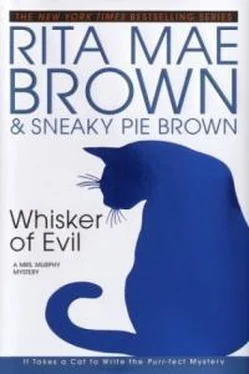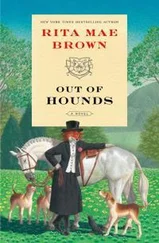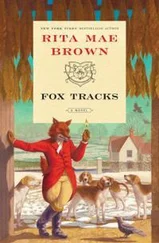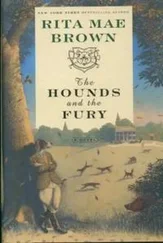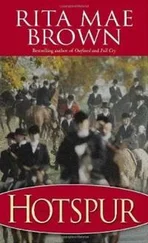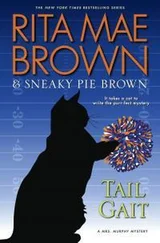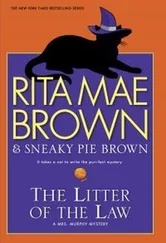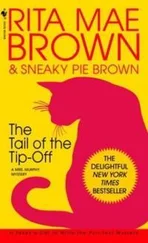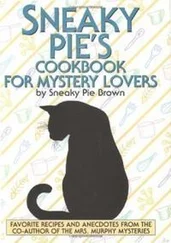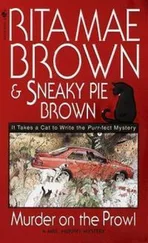“Same percent as Ziggy Flame,” Rick read the cover letter.
“Yes.” Fair was jubilant. “If he were bay, there would be more color variation in the offspring.”
“And you’re sure a bay stallion wouldn’t produce this same percent of chestnut fillies and colts?” Cooper was fascinated.
“That’s why I’ve brought you the box. There’s the printout of every mare bred to Ziggy Flame and Ziggy Dark Star. Her age, her breeding, her color, the color of her offspring, her own breeding, the color of her progenitors. And everything is broken down in the cover letter, but all the research is in that box.”
Rick handed the cover letter to Cooper, who scanned it. “Fair, what you’re telling me is that Ziggy Dark Star is, or I should say was because he died in 1999 at the ripe old age of thirty-two—”
Fair interrupted. “Thirty-three. The papers for Ziggy Dark Star say he was born in 1967, but Flame was born in 1966. He was thirty-three.”
“Ziggy Dark Star was Ziggy Flame!” Cooper couldn’t believe it.
“Wait a minute. How could the owner . . . uh”—Rick grabbed the paper back from Cooper—“Marshall Kressenberg . . . turn a chestnut horse into a bay?”
“By getting up in the middle of the night and periodically dying the horse.” Fair crossed his heavily muscled arms over his broad chest. Working with animals weighing over a thousand pounds made the strong vet even stronger.
“That’s fantastic.” Rick shook his head.
“For seventy-five thousand a pop, you could do it. You would happily do it. That stallion was covering thirty-five to forty-five mares a year in his prime. Do the math. But also in the box are a few articles about Marshall that I thought might convince you.”
Cooper reached down and pulled out copies of articles appearing in The Blood-Horse and Thoroughbred Times , the grand publications of the thoroughbred industry. “There are a lot of them.”
“All of them mention how fanatical Marshall was in his care of the stallion. How only he would handle him and so on. I expect he used dye. But I’m telling you, I stake my reputation on it, Ziggy Dark Star was Ziggy Flame. Apart from color, consider the lip tattoo. The Jockey Club in 1945 began requiring all racehorses to be tattooed on the inner lip. So the first letter in 1945 was A, followed by a series of numbers. Every twenty-six years the letters repeat. The letter for 1966—Ziggy Flame’s birth—was V. The letter of Ziggy Dark Star, supposedly born in 1967, was W. That would be so easy, changing V to W.”
For a moment all three sat and stared at one another, then Rick struck a match on his thumb, lighting up his unfiltered Camel. “Wonder how close Jerome came to knowing this? He read Mary Pat’s notes, which might have gotten him to thinking about more than rabies. My guess is he was pretty close to figuring out that this murder, Barry’s murder, had something to do with money, real money, and breeding.”
“I don’t know if he approached it from the color standpoint, but he knew enough, he was getting hot. In a million years I would have never credited Jerome Stoltfus with that kind of”—Fair didn’t want to be unkind, so he didn’t say “intelligence”—“research ability.”
Cooper, mind in high gear, rubbed her forehead with her finger. “Barry? Does Carmen know? She’s kept a tight lip, which is highly unusual for her.”
Fair’s eyebrows turned upward. “I thought Carmen had disappeared, sort of.”
“Sort of.” Rick’s tone of voice indicated no more information would be forthcoming on that subject.
Fair, uncharacteristically, pushed. “Is she all right?”
Rick, voice low, said, “I can’t talk to you about Carmen, but she’s healthy and she’s safe.”
“Okay.” Fair sheepishly grinned. “She’s such a character, you know, I really don’t want harm to come to her.”
“If she’d pick her boyfriends with a little more care, I don’t think it will,” Cooper deadpanned.
“Makes me wonder if that notebook is all Mary Pat left. What if there was something . . . incriminating—to the killer, I mean,” Rick changed the subject.
“What’s staggering about this is the profit. The horse was an active breeder almost up until the end. Take an average of forty mares a year and seventy-five thousand dollars a pop, and you come out with seventy-five million dollars over Ziggy’s breeding career. And what did it cost to keep him in high style? For his twenty-five years in Maryland, let’s say that Marshall Kressenberg spared no expense. Obviously, the last years would be more expensive. Let’s say he averaged twenty thousand a year keeping Ziggy in the pink and a few thousand a year in glossy ads in the thoroughbred publications. Marshall, at best, spent about five hundred thousand dollars on the stallion over a twenty-five-year period. Think of the phenomenal profit. Seventy-five million! I’d say that’s a major motive for murder.” Fair’s deep voice rose upward.
“When you hit it, you hit it big.” Cooper whistled.
“And Ziggy’s sons are doing well at stud. Marshall has Ziggy Bright Star, Ziggy Silent Star. The guy is raking in more money than we can count. No wonder he has horses running and we see his silks on the televised races. This is just amazing,” Fair said.
Rick drew a deep drag. “Okay, the money is big, but who knew that this stallion would have such a great career?”
“By his third year at St. James, his first crop were on the track. They were doing pretty good. An experienced horseman would start looking at this guy. Obviously, no one could have foreseen what an incredible sire he would become, but even assuming he would be, say, a B– sire as opposed to an A+, the owner could ask about ten or fifteen thousand per mare. Enough to pay off the farm over time.” Fair rested his case. “And we all know that Marshall Kressenberg worked as an exercise rider and groom for Mary Pat. He, even then, was enough of a horseman to see that Ziggy was special, very special.”
“He took a hell of a chance killing her for a horse.” Rick stubbed out his cigarette.
“People have killed for less,” Cooper wisely said.
Rick stood up to stretch. His back ached. “All right, Fair, I’m interested. I can’t arrest Mr. Kressenberg, but I can pay him a call. The first thing I want to know is, who have you told?”
“Harry.”
“God.” Rick sat back down.
“She won’t tell.” Rick defended his ex-wife.
“She may not tell, but I bet she’s halfway to Carroll County, Maryland, by now.”
“No, she’s not. I made her swear to stay here.”
“Her nosiness will lead her somewhere. That woman has an unerring instinct for trouble.” Rick fumed. “Well, Fair, she’s your problem. The first thing I want to do is to talk to the sheriff up there in Carroll County. The second thing I want to do is batten down the hatches for tomorrow. The feeding frenzy will be worse than it has been.”
Cooper noticed Fair’s quizzical expression, so she told him, “The news about Carmen’s disappearance will be in the papers and on TV, too. There will be all manner of speculation and bull. And we all know rabies will come up. Is Carmen dead in a ditch of rabies? Jeez.” She rolled her eyes.
“If you two go up to Westminster”—Fair named the town in Carroll County where Marshall Kressenberg had his farm—“I’d like to go. I think I can be helpful.”
“Of course. And you’ve already been helpful. I need more, Fair, more to convict this guy if he’s our man, but this is the first real break we’ve had.”
“Did you find more bones up on those high meadows?” Fair inquired.
“Uh—yes, but not many. We did find part of a jaw. That will be a big help. I should have a positive I.D. soon.”
Читать дальше
